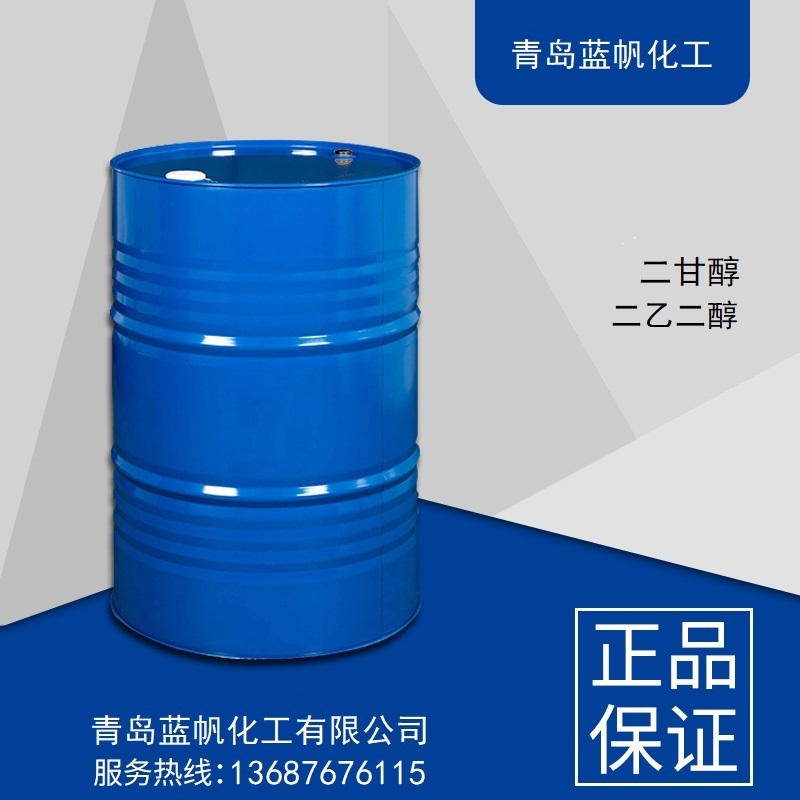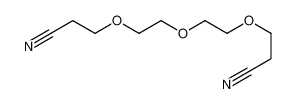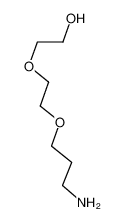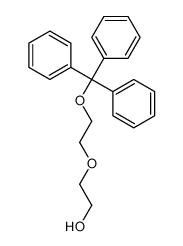| Product name | Diethylene glycol |
|---|
| Product number | - |
|---|---|
| Other names | 2,2'-Oxydiethanol |
| Identified uses | For industry use only. Food Additives: CARRIER_SOLVENT |
|---|---|
| Uses advised against | no data available |
| Company | MOLBASE (Shanghai) Biotechnology Co., Ltd. |
|---|---|
| Address | Floor 4 & 5, Building 12, No. 1001 North Qinzhou Road, Xuhui District, Shanghai, China |
| Telephone | +86(21)64956998 |
| Fax | +86(21)54365166 |
| Emergency phone number | +86-400-6021-666 |
|---|---|
| Service hours | Monday to Friday, 9am-5pm (Standard time zone: UTC/GMT +8 hours). |
Acute toxicity - Oral, Category 4
2.2 GHS label elements, including precautionary statements| Pictogram(s) |  |
|---|---|
| Signal word | Warning |
| Hazard statement(s) | H302 Harmful if swallowed |
| Precautionary statement(s) | |
| Prevention | P264 Wash ... thoroughly after handling. P270 Do not eat, drink or smoke when using this product. |
| Response | P301+P312 IF SWALLOWED: Call a POISON CENTER/doctor/…if you feel unwell. P330 Rinse mouth. |
| Storage | none |
| Disposal | P501 Dispose of contents/container to ... |
none
3.Composition/information on ingredients 3.1 Substances| Chemical name | Common names and synonyms | CAS number | EC number | Concentration |
|---|---|---|---|---|
| Diethylene glycol | Diethylene glycol | 111-46-6 | none | 100% |
Consult a physician. Show this safety data sheet to the doctor in attendance.
If inhaledFresh air, rest.
In case of skin contactRinse skin with plenty of water or shower.
In case of eye contactRinse with plenty of water for several minutes (remove contact lenses if easily possible).
If swallowedGive one or two glasses of water to drink. Rinse mouth. Refer immediately for medical attention. See Notes.
4.2 Most important symptoms/effects, acute and delayedIngestion of large amounts may cause degeneration of kidney and liver and cause death. Liquid may cause slight skin irritation. (USCG, 1999)
4.3 Indication of immediate medical attention and special treatment needed, if necessarySupportive Care: The patient should be resuscitated with isotonic crystalloidal fluids, and acidosis should be corrected. Early treatment with a competitive ADH inhibitor (e.g., 4-methylpyrazole or ethanol), hemodialysis, and supportive care offer the best hope for patient recovery.
5.Fire-fighting measures 5.1 Extinguishing media Suitable extinguishing mediaAlcohol foam, water, carbon dioxide, dry chemical
5.2 Specific hazards arising from the chemicalThis chemical is combustible.
5.3 Special protective actions for fire-fightersWear self-contained breathing apparatus for firefighting if necessary.
6.Accidental release measures 6.1 Personal precautions, protective equipment and emergency proceduresUse personal protective equipment. Avoid dust formation. Avoid breathing vapours, mist or gas. Ensure adequate ventilation. Evacuate personnel to safe areas. Avoid breathing dust. For personal protection see section 8.
6.2 Environmental precautionsPersonal protection: filter respirator for organic gases and vapours adapted to the airborne concentration of the substance. Collect leaking and spilled liquid in sealable containers as far as possible. Wash away remainder with plenty of water.
6.3 Methods and materials for containment and cleaning upSRP: Wastewater from contaminant suppression, cleaning of protective clothing/equipment, or contaminated sites should be contained and evaluated for subject chemical or decomposition product concentrations. Concentrations shall be lower than applicable environmental discharge or disposal criteria. Alternatively, pretreatment and/or discharge to a POTW is acceptable only after review by the governing authority. Due consideration shall be given to remediation worker exposure (inhalation, dermal and ingestion) as well as fate during treatment, transfer and disposal. If it is not practicable to manage the chemical in this fashion, it must meet Hazardous Material Criteria for disposal.
7.Handling and storage 7.1 Precautions for safe handlingAvoid contact with skin and eyes. Avoid formation of dust and aerosols. Avoid exposure - obtain special instructions before use.Provide appropriate exhaust ventilation at places where dust is formed. For precautions see section 2.2.
7.2 Conditions for safe storage, including any incompatibilitiesDry. Well closed. Separated from strong oxidants.
8.Exposure controls/personal protection 8.1 Control parameters Occupational Exposure limit valuesno data available
Biological limit valuesno data available
8.2 Appropriate engineering controlsHandle in accordance with good industrial hygiene and safety practice. Wash hands before breaks and at the end of workday.
8.3 Individual protection measures, such as personal protective equipment (PPE) Eye/face protectionSafety glasses with side-shields conforming to EN166. Use equipment for eye protection tested and approved under appropriate government standards such as NIOSH (US) or EN 166(EU).
Skin protectionWear impervious clothing. The type of protective equipment must be selected according to the concentration and amount of the dangerous substance at the specific workplace. Handle with gloves. Gloves must be inspected prior to use. Use proper glove removal technique(without touching glove's outer surface) to avoid skin contact with this product. Dispose of contaminated gloves after use in accordance with applicable laws and good laboratory practices. Wash and dry hands. The selected protective gloves have to satisfy the specifications of EU Directive 89/686/EEC and the standard EN 374 derived from it.
Respiratory protectionWear dust mask when handling large quantities.
Thermal hazardsno data available
9.Physical and chemical properties| Physical state | Clear liquid |
|---|---|
| Colour | Colorless syrupy liquid |
| Odour | Practically odorless |
| Melting point/ freezing point | -7°C(lit.) |
| Boiling point or initial boiling point and boiling range | 245°C(lit.) |
| Flammability | Combustible. |
| Lower and upper explosion limit / flammability limit | 1.6%-10.8% |
| Flash point | 143°C |
| Auto-ignition temperature | 227.78°C |
| Decomposition temperature | no data available |
| pH | no data available |
| Kinematic viscosity | 0.30 cP at 25°C |
| Solubility | In water:SOLUBLE |
| Partition coefficient n-octanol/water (log value) | log Kow = -1.47 (est) |
| Vapour pressure | 0.01 mm Hg ( 20 °C) |
| Density and/or relative density | 1.116g/mLat 20°C |
| Relative vapour density | 2.14 (vs air) |
| Particle characteristics | no data available |
no data available
10.2 Chemical stabilityLow volatility
10.3 Possibility of hazardous reactionsSlight, when exposed to heat or flame; can react with oxidizing materials.DIETHYLENE GLYCOL is incompatible with strong oxidizing agents. It is also incompatible with strong bases. It can react with sulfuric acid and other dehydrating agents, nitric acid, oxygen, hydrogen peroxide, perchloric acid and strong acids. Mixtures with sodium hydroxide decompose exothermically when heated to 230°C.
10.4 Conditions to avoidno data available
10.5 Incompatible materials... Can react with oxidizing materials ... Mixtures with sodium hydroxide decompose exothermically when heated to 230°C and release explosive hydrogen gas.
10.6 Hazardous decomposition productsWhen heated to decomposition it emits acrid smoke and irritating fumes.
11.Toxicological information Acute toxicity- Oral: LD50 Rat oral 15.6 g/kg
- Inhalation: no data available
- Dermal: no data available
no data available
Serious eye damage/irritationno data available
Respiratory or skin sensitizationno data available
Germ cell mutagenicityno data available
Carcinogenicityno data available
Reproductive toxicityno data available
STOT-single exposureno data available
STOT-repeated exposureno data available
Aspiration hazardno data available
12.Ecological information 12.1 Toxicity- Toxicity to fish: LC50; Species: Lepomis macrochirus (Bluegill fish); Conditions: static bioassay, filtered tap water, temperature 20°C; Concentration: 1,000 mg/L for 96 hours.
- Toxicity to daphnia and other aquatic invertebrates: LC50; Species: Daphnia magna (Water flea, age < or =24 hr); Conditions: freshwater, static, 20-22°C, pH 7.6-7.7; Concentration: 10000000 ug/L for 24 hr /formulated product
- Toxicity to algae: no data available
- Toxicity to microorganisms: no data available
AEROBIC: Diethylene glycol, present at 30 mg/L, reached 90% of its theoretical BOD in 4 weeks using an activated sludge inoculum at 100 mg/L in the Japanese MITI test(1). The compound, present at 100 mg/L, showed 59% (rate constant of 0.081/day, 5 day lag period) and 89% degradation (0.173/day, 5 day lag period) using the Sapromat and Oxitop systems, respectively, in manometric respirometry tests using activated sludge at 30 mg/L dry matter(2). Biodegradation of 44% and 78% degradation were reported when using seawater as inoculum in a shake flask die-away test (chemical concentration of 5-30 DOC/L) and the closed bottle oxygen consumption test (test chemical concentration of 2-10 mg/L), respectively, both incubated at 15-20°C for 28 to 60 days; however, high carbon levels may have compromised the test results(3).
12.3 Bioaccumulative potentialAn estimated BCF of 3 was calculated in fish for diethylene glycol(SRC), using an estimated log Kow of -1.5(1) and a regression-derived equation(2). According to a classification scheme(3), this BCF suggests the potential for bioconcentration in aquatic organisms is low(SRC).
12.4 Mobility in soilUsing a structure estimation method based on molecular connectivity indices(1), the Koc of diethylene glycol can be estimated to be 1(SRC). According to a classification scheme(2), this estimated Koc value suggests that diethylene glycol is expected to have very high mobility in soil.
12.5 Other adverse effectsno data available
13.Disposal considerations 13.1 Disposal methods ProductThe material can be disposed of by removal to a licensed chemical destruction plant or by controlled incineration with flue gas scrubbing. Do not contaminate water, foodstuffs, feed or seed by storage or disposal. Do not discharge to sewer systems.
Contaminated packagingContainers can be triply rinsed (or equivalent) and offered for recycling or reconditioning. Alternatively, the packaging can be punctured to make it unusable for other purposes and then be disposed of in a sanitary landfill. Controlled incineration with flue gas scrubbing is possible for combustible packaging materials.
14.Transport information 14.1 UN Number| ADR/RID: Not dangerous goods. | IMDG: Not dangerous goods. | IATA: Not dangerous goods. |
| ADR/RID: unknown |
| IMDG: unknown |
| IATA: unknown |
| ADR/RID: Not dangerous goods. | IMDG: Not dangerous goods. | IATA: Not dangerous goods. |
| ADR/RID: Not dangerous goods. | IMDG: Not dangerous goods. | IATA: Not dangerous goods. |
| ADR/RID: no | IMDG: no | IATA: no |
no data available
14.7 Transport in bulk according to Annex II of MARPOL 73/78 and the IBC Codeno data available
15.Regulatory information 15.1 Safety, health and environmental regulations specific for the product in question| Chemical name | Common names and synonyms | CAS number | EC number |
|---|---|---|---|
| Diethylene glycol | Diethylene glycol | 111-46-6 | none |
| European Inventory of Existing Commercial Chemical Substances (EINECS) | Listed. | ||
| EC Inventory | Listed. | ||
| United States Toxic Substances Control Act (TSCA) Inventory | Listed. | ||
| China Catalog of Hazardous chemicals 2015 | Not Listed. | ||
| New Zealand Inventory of Chemicals (NZIoC) | Listed. | ||
| Philippines Inventory of Chemicals and Chemical Substances (PICCS) | Listed. | ||
| Vietnam National Chemical Inventory | Listed. | ||
| Chinese Chemical Inventory of Existing Chemical Substances (China IECSC) | Listed. | ||
| Creation Date | Aug 10, 2017 |
|---|---|
| Revision Date | Aug 10, 2017 |
- CAS: Chemical Abstracts Service
- ADR: European Agreement concerning the International Carriage of Dangerous Goods by Road
- RID: Regulation concerning the International Carriage of Dangerous Goods by Rail
- IMDG: International Maritime Dangerous Goods
- IATA: International Air Transportation Association
- TWA: Time Weighted Average
- STEL: Short term exposure limit
- LC50: Lethal Concentration 50%
- LD50: Lethal Dose 50%
- EC50: Effective Concentration 50%
- IPCS - The International Chemical Safety Cards (ICSC), website: http://www.ilo.org/dyn/icsc/showcard.home
- HSDB - Hazardous Substances Data Bank, website: https://toxnet.nlm.nih.gov/newtoxnet/hsdb.htm
- IARC - International Agency for Research on Cancer, website: http://www.iarc.fr/
- eChemPortal - The Global Portal to Information on Chemical Substances by OECD, website: http://www.echemportal.org/echemportal/index?pageID=0&request_locale=en
- CAMEO Chemicals, website: http://cameochemicals.noaa.gov/search/simple
- ChemIDplus, website: http://chem.sis.nlm.nih.gov/chemidplus/chemidlite.jsp
- ERG - Emergency Response Guidebook by U.S. Department of Transportation, website: http://www.phmsa.dot.gov/hazmat/library/erg
- Germany GESTIS-database on hazard substance, website: http://www.dguv.de/ifa/gestis/gestis-stoffdatenbank/index-2.jsp
- ECHA - European Chemicals Agency, website: https://echa.europa.eu/

































